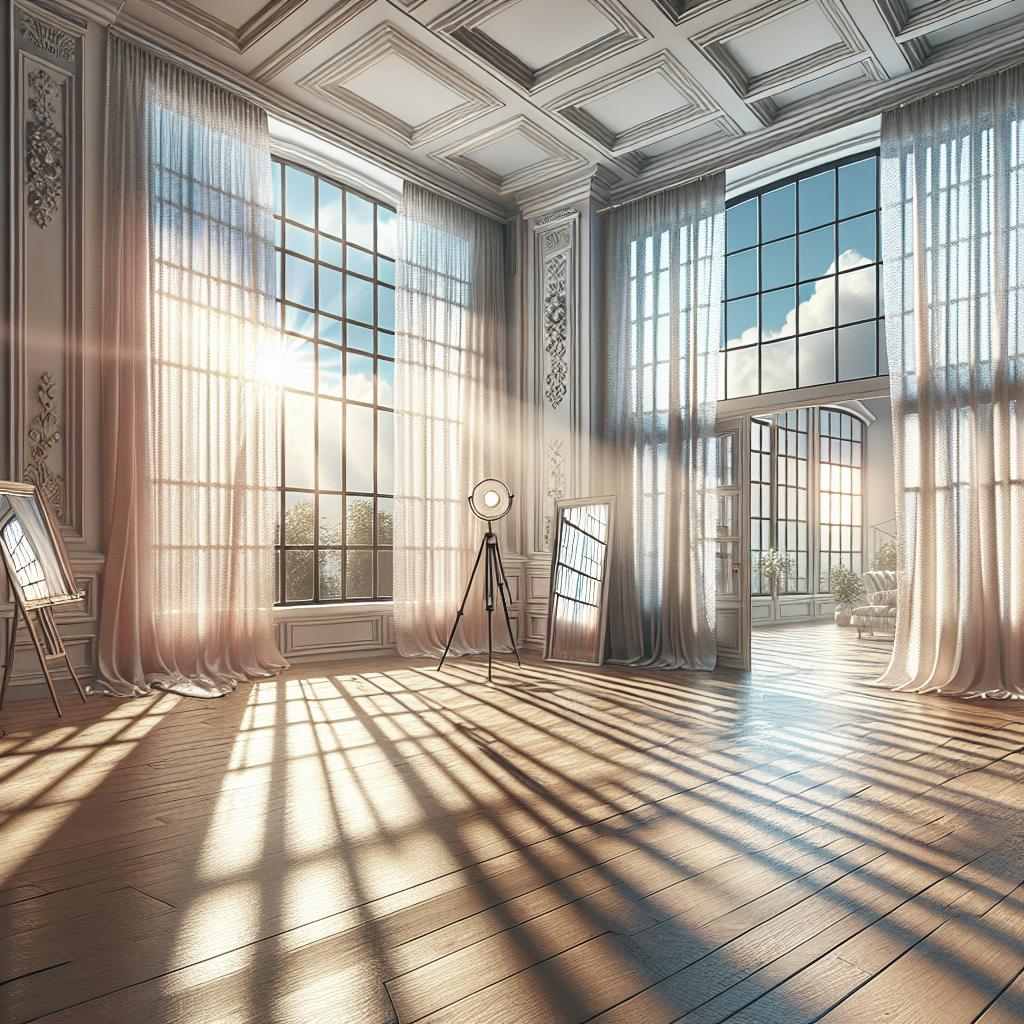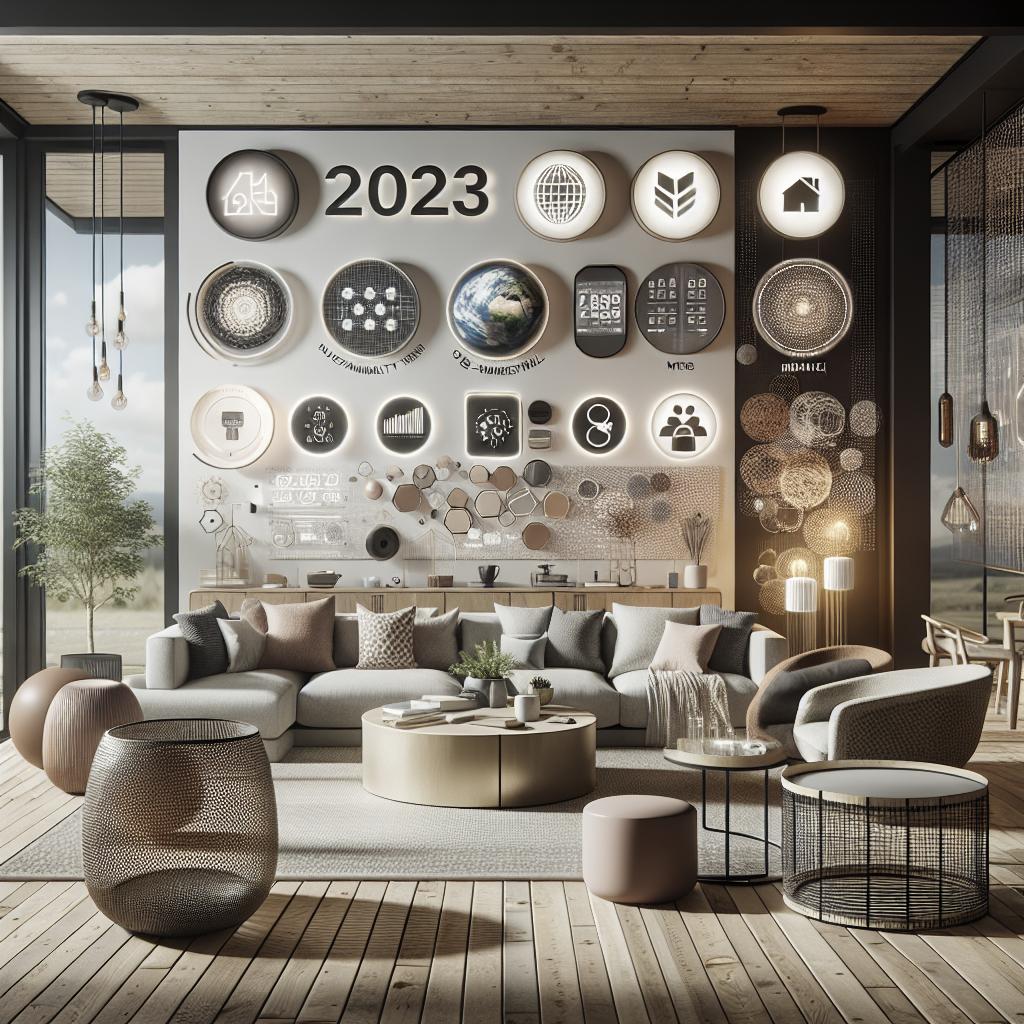Natural Light Enhancement Techniques
Harnessing natural light within your living space can transform the mood, aesthetics, and even the perceived
size of your rooms. This becomes particularly significant during the darker months or in homes where daylight is
limited. In this comprehensive guide, we will explore a myriad of techniques to enhance the natural light in
your home. From strategic use of mirrors to the clever application of paint, and considerations of window
treatments to architectural interventions like skylights, each method plays a vital role. You’ll discover tips
on maximizing exterior light, keeping windows clean, and choosing the right furnishings to complement these
efforts. Whether you’re looking to make small changes or embark on a bigger project, these ideas will brighten
your space and add a touch of sustainable design to your home.
1. The Magic of Mirrors: Reflecting Light and Expanding Space
Mirrors are more than decorative accessories; they are powerful tools to amplify natural light in any room. By
strategically placing mirrors across from windows or light sources, you can bounce more light into the room,
making it feel brighter and more expansive. This optical illusion not only enhances luminosity but also creates
the perception of additional space, an essential trick for smaller areas.
For a contemporary look, consider using oversized mirrors or a series of smaller, framed mirrors to create a
gallery wall. Placement is key: mirrors should be positioned at eye level to maximize their reflective
potential. In narrow hallways or darker corners, a well-placed mirror can significantly uplift the atmosphere,
reducing that closed-in feeling.
2. Embrace the Power of Paint: Light Colors for Brighter Spaces
Paint is a versatile ally in the quest for natural light enhancement. Light, neutral colors reflect more light
than darker hues, making the space feel airy and inviting. Whites, creams, and soft pastels not only brighten
the space but can also complement various interior styles, from minimalist to classical.
To optimize the effect, choose a semi-gloss or satin finish, which reflects light better than matte paint. While
walls are the obvious choice for a fresh coat of paint, don’t overlook ceilings. A lighter ceiling can visually
open the room, directing the gaze upward and enhancing the sense of spaciousness.
3. Window Treatments: Balancing Light and Privacy
Window treatments are vital for controlling the flow of natural light while ensuring privacy. Opt for sheer
curtains or light-colored blinds which diffuse harsh sunlight without completely blocking it. This setup allows
for a soft, even glow throughout the day.
For rooms that require more privacy, such as bedrooms or bathrooms, consider layered window treatments that
offer flexibility. Combining sheer panels with heavier drapes can provide the best of both worlds, allowing
natural light to filter in during the day while ensuring privacy when needed.
4. Skylights and Solar Tubes: Bringing Light from Above
Skylights are an architectural addition that can dramatically increase the amount of natural light in a home.
Installed in ceilings, they allow sunlight to flood in from above, ideal for rooms that don’t have many
windows. The design and placement of skylights can be customized to suit different room layouts.
For spaces where traditional skylights aren’t feasible, solar tubes provide an innovative solution. These tubes
capture sunlight from the roof and channel it down through reflective pipes, distributing light into the room
below. Both options can brighten interiors effectively, reducing the need for artificial lighting.
5. Reflective Surfaces: Beyond Mirrors
While mirrors are the go-to choice for reflecting light, other surfaces can be just as effective. Glossy tiles,
polished metallic accents, and even gloss-finished furniture can reflect light and contribute to a brighter
ambiance.
In kitchens and bathrooms, consider glossy backsplashes or high-shine countertops that catch and reflect light.
Similarly, metallic lighting fixtures and hardware can add both brightness and a touch of elegance. By
incorporating these elements, you layer in additional sources of reflective surfaces without relying solely on
mirrors.
6. Strategic Furniture Placement: Clearing the Path for Light
The arrangement of furniture plays a critical role in facilitating natural light flow. Keep bulky furniture
pieces away from windows to avoid obstructing the entry of light. If possible, opt for streamlined pieces that
don’t block pathways of light across the room.
Consider using open shelving or glass tables, which allow light to pass through. Transparent or acrylic
furniture pieces are excellent for smaller rooms, as they maintain the illusion of openness and allow light to
travel unimpeded.
7. Maximize Exterior Light Entry
Enhancing the amount of light that can enter from outside involves strategic landscaping and exterior adjustments.
Trim trees and shrubs that might be overshadowing windows, allowing more sunlight to filter into your home.
Opt for glass doors or additional windows where structural changes are possible to increase the natural light
influx. Thoughtful exterior lighting and the use of light-colored outdoor furnishings can also help reflect more
light into your home.
8. Optimize Window Cleaning and Maintenance
Regular cleaning of windows is a simple yet often overlooked method to enhance natural light. Dirt, dust, and
grime accumulate over time, reducing the clarity and luminosity of windows. Establish a routine cleaning
schedule to ensure your windows let in as much light as possible.
Don’t forget to inspect and maintain window frames and seals. Damaged seals or frames can lead to energy loss
and condensation build-up, both of which can diminish the effectiveness of your windows in capturing light.
9. Utilize Light-Colored Flooring
Just like walls, flooring can play a significant role in reflecting light. Light-colored floors, such as pale
wood or light carpets, can help to spread more light throughout a room compared to darker counterparts that tend
to absorb it.
For those with existing dark floors, incorporating light-colored rugs can make a beneficial impact. These
additions not only brighten the room but also add texture, enhancing both the visual and tactile
ambiance of your space.
10. Create a Sunlight Room
A sunlight room, or sunroom, is designed to capture the most sunlight possible and is an excellent way to bring
more natural light into your home. With large windows or glass walls, sunrooms create an immersive indoor-outdoor
experience.
When constructing a sunroom, consider factors such as orientation, glass selection, and ventilation to maximize
comfort and light exposure throughout the year. A well-thought-out sunroom can offer a tranquil retreat bathed
in natural light.
11. Embrace Minimalism for Maximum Light
Embracing minimalism is about reducing clutter and choosing simplicity, which in turn allows for more light to
permeate your spaces. By minimizing furniture and decor, you can create unobstructed pathways for light and
make rooms appear larger and more inviting.
Storage solutions that keep things tidy and out of sight can contribute to a minimalist aesthetic. The strategic
selection of only essential, dual-purpose fixtures enhances both the functionality and warmth of your environment,
illuminating your space literally and figuratively.
Lessons Learned
| Technique | Description |
|---|---|
| The Magic of Mirrors | Use mirrors to reflect light and create the illusion of a larger space. |
| Embrace the Power of Paint | Choose light colors and finishes to enhance light reflection. |
| Window Treatments | Opt for sheer or layered treatments to balance light and privacy. |
| Skylights and Solar Tubes | Install for additional light from above, ideal for window-limited rooms. |
| Reflective Surfaces | Incorporate glossy or metallic finishes beyond mirrors for light reflection. |
| Strategic Furniture Placement | Arrange furniture to clear pathways and enhance light flow. |
| Maximize Exterior Light Entry | Modify exterior landscaping to increase natural light intake. |
| Optimize Window Cleaning | Maintain clean, clear windows for maximum light penetration. |
| Utilize Light-Colored Flooring | Choose lighter floors or rugs to reflect more light. |
| Create a Sunlight Room | Construct a sunroom to maximize sunlight exposure. |
| Embrace Minimalism | Reduce clutter and simplify space for better light flow. |


